Another word for a “Two Face” is a hypocrite, and in some ways a hypocrite is a coward. A fearful person who appears one way but is another.
Many of the YouTube conspiracy buffs associated with this case spend their time sifting through details and detritus, looking for meaning and revelation. But it’s not in shadows or dolls covered in plastic sheets that the real answers lie. It’s somewhere else, somewhere more subtle.
One of the obvious idiosyncrasies of this case is not only Shan’ann’s OCD, but Chris Watts’ OCD. If Shan’ann was more about organizing and scheduling, Watts seemed preoccupied with numbers, cleanliness and self-grooming.
Those who dispute the OCD Narrative, or which to minimize it, do the disservice of breaking a vital fragment of the psychology from this case, and removing it from the main body. If we acknowledge that OCD was present within both of these people, where does it lead us?
There’s a long and a short version to the answer. The short version is that OCD is symptom of one simple thing: anxiety. It’s a psychological attempt to control anxiety. This suggests that both Shan’ann and Watts were – despite appearances, despite their public faces or social media avatars – privately insecure and unusually anxious.
This chronic social anxiety partially explains Watts’ motive. He was a weak man with a weak social currency, and in his mind destroying his family and making them disappear was the easier option than a messy divorce. Probably money factored into his decision-making, but it was driven by fear. Fear of retribution from a vindictive society if he did things by the book.

Coming back to Shan’ann, and her second face, when we take the OCD Narrative [as well as the anxiety] into the realm of MLM and Facebook, we see all the troubles that are there magically disappear. How? Through magical thinking. Suddenly the world is recast as a place where one can Thrive. All problems disappear as soon as I put a patch on my arm. What the MLM effectively is in this case is a proxy for the OCD. It’s an antidote against anxiety.
It’s also a lie, which shows how ultimately the efforts to control anxiety by putting on a brave face may fool a few people, but the real loser is the liar. We don’t learn by lying, we learn by living. We don’t grow or enrich ourselves by lying, but by advancing ourselves in reality.
Where these ideas bring us is to the original title I wanted to use for this post: The Psychological Connections Between OCD, Trauma and Victim Culture. Since I thought it would scare most people away I went with the kindergarten version.
Elsewhere on this site a discussion arose around the relevance of history. It doesn’t seem relevant, does it? What does a war in a previous century have to do with a family in Frederick Colorado? Everything and nothing. Everything in the sense that a myriad of forces we’re not aware of are forming our culture, and who we are, and who we respond to our circumstances today. And nothing, because the identities in this story were to some extent self-generated.
It’s important to consider both aspects in true crime – the cultural psychology aspect and the identity aspect.
We ought to be aware that “identity politics” was what fueled the Second World War. Identity politics is all about rallying around and identifying strongly with an idea. One identifies so strongly with this idea, that one’s identity becomes infused with it.
For those interested in this subject, I recommend a brief browse through the history of identity politics [written by the sociologist Frank Furedi]. Here’s an excerpt:
…the politics of culture has rarely allowed the forging of strong bonds between different groups, as today’s acrimonious dispute between feminists and trans activists shows. Human solidarity is one of the main casualties of identity politics. Once different groups retreat into their respective safe spaces, there will be little common ground left for those committed to the politics of solidarity and the ideal of universalism…
How identity politics appears in the Watts case is this tribal approach to identifying with the victim, or sympathizing excessively or inappropriately with perpetrator, and then the two groups bombarding one other with the backing of their respective political camps. TCRS actively discourages this practice, but it’s nevertheless a constant theme in true crime.
Identity politics is our own form of OCD. It’s our own version of trying to control or recast our anxiety. There is a lot more to say about the Culture of Victimhood as a general theme pervasive in our society, and also the victim psychology within the Watts case. What’s clear is during his “confession”, when Watts himself was becoming a real victim in his own story, he was offered an olive branch.

He was offered the chance to be the victim, and thus innocent of his own actions. This was ironic given the reason he committed the crime – it was a chance to no longer be a victim, and not be held accountable by his ex-wife for his actions [meaning his new partner could see him as innocent, or in his mind, as “who he really was”.]
When offered the chance to be the victim during his interrogation, Watts did this by making his murdered wife the offender.
Think about Identity Politics and idea of identifying with a Perceived Victimhood. Maybe you feel discriminated against because of your race, sexual orientation or some other reason. Maybe you feel diminished because of someone or something else. Maybe you feel your country is about to be overrun by immigrants. Maybe you feel someone or some class of people is invading your domain and will soon steal your job. All of this raises anxiety. At the same time, the source responsible for this narrative offers an instrument to sort it out [a wall, a patch, an exit, an army of the like-minded etc].
There is also a fascinating relationship between history and victimhood, in fact history tends to be used like a convenience store to prop up victimhood, especially in modern times. So after decades of silence on the subject, concepts like slavery and colonialism and the idea of privilege comes into vogue, at a time when – for example – colonialism is safely in our past. So why bring things up if their relevance to our actual lived realities is such a stretch?
Because it cuts to who we are. It cuts to the core of our own whys. And this is the attraction of true crime. We don’t realize it, but in some way, shape or form we identify with the circumstances of a crime as much as we are horrified and try to distance ourselves from it. Even when we blame and disassociate ourselves, calling the criminal names that makes us feel better about ourselves, we reveal our own shallow approach to the victim and their lived experience. We’re not expressing solidarity when we gravitate to a victim psychology, we’re doing the opposite: we’re separating ourselves from a universally lived existence, and we do that in an attempt to elevate ourselves [as innocent victims we deserve some sort of recompense, some compensation].
We need to move beyond imposing our own sense of Perceived Victimhood on how we see others, and how we see the world. Just as MLM recasts the world in an instant as a place filled with magical solutions and patches that can transform our lives, victimhood does the same. We wear a patch branded with a particular kind of victimhood, which allows us to belong to a fellowship of victims, and we may even pay money to do that.
TCRS is about seeing the people in these cases, not imposing our own narratives onto them.
It’s not easy.
I don’t like to discuss these concepts here, simply because they require a lot of background, and a lot of silent contemplation. I prefer to do due diligence to these ideas as a chapter within a narrative where it will resonate best, and where there are a lot of enriching references to sketch the psychology properly. Also, many who come here skating on the highways of Google, tend to be the least affected by them. This is a private and personal matter, and better debated and considered as part of one’s own internal dialogue.
Let me leave you with something from Psychology Today originally posted in June 2014.
Why would people loudly and publicly proclaim themselves as victims? Perhaps a better question, based upon the level of secondary gain, attention, protection and support received by these people, is why wouldn’t they? With all of the attention on the issue, why are we surprised when people are exaggerating, using, or downright lying, about victimization? Of course, when we attach benefits to identification as a victim, we will hear from more victims, both real and exaggerated. Acknowledging a history of victimization is healthy, but is that all that a person is?

True Crime Analysis, Breakthroughs, Insights & Discussions Hosted by Bestselling Author Nick van der Leek
Tag: OCD
As part of ongoing research for the 6th book in the series, I spent a fair amount of time studying the image below. It’s one of the view truly authentic crime scene photos in the entire Watts case.
When this photo was taken by Crime Scene Analyst Dave Yocum [using his cell phone], he was trying to see inside the tanks. They knew the children had been dumped in the tanks, and yet when he shone a special torches inside the tank, the view was obstructed by venting mist.
No smoke or gas fumes are evident in this image, but the tape measure unfortunately obstructs and reflects a lot of the light that would otherwise penetrate the orifice beneath the thief hatch.
I was also looking very carefully at many of these surfaces for traces of blood, hair fragments, fibers or skin tissue. There is a strange flap of something at about two ‘o clock on the image below. It could be a fragment of pajamas, or it could be part of the thief hatch apparatus.
In a comment left on TCRS today by Sylvester, I went to look at Melissa Parrish’s comments about Watts releasing the pressure value on the tanks at CERVI 319 [on Monday morning] causing oil to spray out. Parrish was surprised not only by this, but by Watts not bothering to clean up the mess he’d made.
It’s often missed that Watts was also OCD in his own way, just as Shan’ann was. He was meticulous about cleanliness, which is possibly why Shan’ann used this to her own advantage and put him on permanent laundry duty for the whole family.

Watts’ emphasis on appearance is also perhaps why he appeared to like wearing matching outfits, and why his well-groomed appearance played so well into the “fairy tale” aspect of this case in particular. His meticulous attention to detail [in certain areas] also explains why so little crime scene evidence was found in totem.
Watts’ OCD may be why they got along in a certain sense, and perhaps why Watts [quite uniquely] understood and loved Shan’ann, and she him, certainly during the initial phase of their marriage. And so, because of this clear behavior pattern, Parrish thought it was weird that on this day of all days, Watts was being something of a piggy on the site.
Curiously Troy McCoy made a similar observation in terms of Watts appearance that same morning.

Clearly this manoeuvre to vent the tanks was intended to contaminate, and indeed eviscerate all traces of his daughters and himself in, on and around the hatch. In some footage of venting that I’ve come across, it sounds like a jet engine when high pressure hot gas escapes out of these eight inch holes.
The image below, photographed Tuesday night, also appears to indicate some of the residues of this spray that Watts deliberately discharged over his crime scene the previous day. It was the equivalent of dumping bleach over a kill scene, just quicker and more effective.
Kudos to Sylvester for bringing my attention to this. In true crime we try to be omniscient, and when many eyes and heads apply themselves to the same thing, we can come close. If we keep paying attention, what is buried or simply obscure is eventually brought to light.




At 01:32 in the video below, Shan’ann absently tells her husband, “She wants more marshmallows.” Watts immediately responds and exits out of the background. The whole video is worth watching, if only to get a sense of how Watts is basically there but not there. He tries initially to contribute, but ultimately is excluded from the video, even though the two children are often addressed directly. Watts is never addressed. He’s never asked:
“Hey Chris, what do you think?”
Instead he’s often addressed in the third person, as if he’s not actually there.
At 5:02 Shan’ann turns the camera onto Bella and says, “You’re cuter than daddy. We’ll just have you…talk to the crowd.”
Cindy Watts has thus far been dismissed as little more than “the monster’s mother”. In some of the few interviews she’s given, she’s said she didn’t like the way Shan’ann spoke of him to her, and possibly didn’t like the way she spoke to him.
At 03:48 in the raw video of Cindy Watts, she says:
Christopher was…[shakes her head with agitation] always seemed anxious. And he…er…when she needed something, I mean he would run. He wouldn’t walk, he would run. He would get it. He just always seemed to right there…a-at her beck and call.
REPORTER: Did that seem odd to you?
Very odd. It was very odd. He just seemed nervous.
Has Cindy highlighted something here that was a real issue for her son, or are her comments unreliable exaggerations?
Page 58 of the Discovery Documents highlights an insight from someone who actually lived with the Watts family for two months in 2017. That’s a lot of inside access. Cristina Meacham refers to Watts getting aggravated while hanging a picture by Shan’ann’s input. She also mentions Watts feeling Shan’ann was often putting the kids first, ahead of him.
In the video cited above, that appears to be the case, doesn’t it – the children brought forward while he is pushed to the background.

Various sources confirm an unusual trait about Shan’ann – she had Obsessive Compulsive Discorder [OCD].
When Nickole Atkinson gave an interview to ABC, she was adamant that she knew something was wrong with Shan’ann because it wasn’t like Shan’ann to go somewhere without her car, or phone, or to leave the kids’ beds unmade [let alone her own].
Atkinson told ABC:
“The girls’ beds weren’t made [looks at the ceiling, then to her left]; Shan’ann was very OCD. Everything in her house had a place. Everything was labelled. If something was out of the ordinary, it was very out of the ordinary, for her…”
Shan’ann’s OCD is a big deal. It was a big deal to Nickole, and yet the term OCD appears only six times in the Discovery Documents, a relative rarity given how instrumental this was to Shan’ann’s personality, and identity.
OCD was largely who she was. It made her somewhat controlling, somewhat overbearing, somewhat regimented in how she ran her household, and in terms of scheduling her life and those around her – Shan’ann ran a very tight ship. But how much somewhat are we talking about here, really?



The combination of OCD and MLM is also central to the operative psychology of the Watts case. In September 2018 I dealt with this aspect in a post titled:
What impact did THRIVE have on Shan’ann’s marriage?
Of course it’s one thing to say someone is OCD [or a narcissist], it’s another thing to know what that means – to experience it. Nickole did, and we get a little sense of what she means by looking into Shan’ann’s pantry, and her home. But is it enough?
At the bottom of this post, Shan’ann’s Pinterest profile provides insight into the scale and scope of her OCD. You can see the size of it at a single glance.
But, as I’m often at pains to emphasize in my books, when it comes to personality traits and dynamics, we can’t be told what they are – we have to be shown them, we have to experience them – like the Matrix – for the truth to really resonate.
Before showing you though, the OCD aspect deserves a little tell, too.
Shan’ann’s OCD was likely rooted in anxiety primarily about her health problems. Shan’ann had other anxieties too, but her health issues were fairly significant. The OCD was thus a response – arguably an over-response – to control her environment. That environment included her spouse. Now here’s the rub. OCD can also be rooted in narcissism, and aggravated by narcissism.
The table below from psychcentral.com provides some cursory coverage of the difference between OCD + NPD [NPD = Narcissistic Personality Disorder] and vanilla OCD.

Notice the aspect at the bottom of the table:
No concern or empathy for how their OCD behavior negatively impacts others
When there is vanilla OCD on the other hand:
Constantly feels bad for how their OCD behavior impacts others
Thus far Shan’ann’s narcissism, especially as it relates to her OCD, has been completely missing from the media narrative, or any narrative surrounding this case. The accusations that Chris Watts’s narcissism stands alone, and is central to the murders rings hollow because we haven’t contextualized it: his narcissism compared to whose? Yours? Society’s? What about Shan’ann’s?
If we refer to Shan’ann’s social media, there are countless instances where she describes her husband as someone who does whatever she tells him to do. Shan’ann has no concern for how this makes him feel; it’s simply the way things work in their marriage, and he gets it, because he gets her. That’s great, except we can tell – intuitively – that over time being a pawn on someone’s OCD board game – even within a loving marriage – has to get old at some stage.
https://youtu.be/1M44hQ2Xls8?t=529
Narcissism is a popular catch-term in true crime now, dropped by all the big hitters – Nancy Grace, Dr. Phil, HLN and so on. And the more it is used, the more it gets reused.
Most of the folks using the ‘N’ word don’t really understand how narcissism works, and even less how it relates to true crime. They have a vague sense that’s it’s a particularly ugly form of conceit, and selfishness. And so I guess Chris Watts was a particularly conceited and selfish husband and father to do what he did. Well, except before he committed the crimes no one – especially not Shan’ann- would accuse Watts of being either conceited or selfish, in fact quite the opposite.

No one, naturally, wants to talk about Shan’ann’s narcissism. That would be distasteful, wouldn’t it? Victim blaming. But here at CrimeRocket we’re not trying to win a popularity contest, or trying to use the same catch-terms as the talk show hosts.
We’re here to find out what the fuck happened, and who these people really are, at least, that’s why I’m here. Now when I say this, I say it with the greatest of respect; if you’d rather talk about only certain aspects of a case, and feel uncomfortable talking about other aspects which you feel should be off limits, please fuck off and go be schizophrenic in your selective reality on your own time, somewhere else.
For the rest, let’s answer the question: is OCD related to narcissism, and if so, how so?
According to healthyplace.com:
The narcissist’s very pursuit of Narcissistic Supply is compulsive…[and] in many respects, narcissism can be defined as an all-pervasive obsessive-compulsive disorder.

So we see OCD and Narcissism are related, and that Narcissist Personality Disorder [NPD] actually exacerbates OCD. OCD and NPD aren’t the same thing however [a video at the bottom of this page explains how they differ]. But going back to additional reinforcing aspects from psychcentral.com’s table, we see there are some pretty ugly traits associated with OCD and NPD, especially exploitation, entitlement and arrogance.

How much of this is “evil” in the conventional sense of the word? In some ways, none of it is evil. It’s simply the habitual psychology of control, or the efforts at control, and how that is exerted is by putting the world [and people] into box, with nice neat labels on. The world is also reduced to timetables and schedules, along with everyone in them. So the OCD-Narcisisst may not be aware of the terror they unleash on the world in their efforts to control every conceivable aspect, they’re simply doing their thing trying to organize their shit.
On the other hand, is it okay for one person to exert a fucking tyranny over another? In that sense, it’s not evil, but it suggests there is a flagrant lack of self-awareness. In other words, do I realize that what I do habitually can cause pain to others, or do I simply not care?
Shan’ann’s nut meltdown is a good example demonstrating how difficult it may be to know where to draw the line between tyranny, OCD and common sense.
Which is it?
Shan’ann’s Pinterest profile below shows the extent of her OCD. Not all OCDs are created equal, just as there is a spectrum to narcissism and NPD. But clearly, sometimes OCD is on a vastly different scale to what could be considered “normal”.











The above profile comprises the following categories:
- Meal prep
- House Stuff [92 pins]
- Photography [54 pins]
- Exercise [54 pins]
- Party Ideas [16 pins]
- Tattoo ideas for Me [14 pins]
- Organize it [11 pins]
- Beauty
- Drink Anyone?
- Desserts [304 pins]
- Dinner is served! [273 pins]
- Breakfast
- Salads [47 pins]
- Appetizers and sides [71 pins]
- Sandwiches and burgers
- Food party ideas
- Snack ideas
- Soups and stews
- Dressings
- Pasta salads
- Gluten free desserts
- Workout
- Breads and Biscuits
- Marinades and dressings
- Bella [46 pins]
- Bahaha
- Good to know
- Lunch ideas
- Holiday baking ideas
- Valentines
- Love*
- Crafts
- Newborn pic ideas [12 pins]
- Smoothies
- German dishes [19 pins]
- Polish food [9 pins]
- Chicken dishes
- Ground Turkey Dishes
- Basement ideas [8 pins]
- Crockpot kinda Day
- Pork Dishes
- Bella’s 1st Birthday [70 pins]
- Kids activities [4 pins]
- Seafood dishes
- Kids playroom [23 pins]
- Mothers/Fathers Day [3 pins]
- Fathers Day [8 pins]
- Baby boy room ideas [46 pins]
- Man cave [2 pins]
- Pregnancy
- Halloween
- Thanksgiving
- Freezing food
- Italian food
- Thirty-One [82 pins]
- Outdoor patio
- Origami owl
- Dips [13 pins]
- Christmas
- Halloween Costumes
- Crafts with Kiddos
- Sensory Play [75 pins]
- Activities for 0-18 mo
- Gross motor skills play
- New Years party
- Super Bowl Party [20 pins]
- Girl room ideas [42 pins]
- Baby number 2
- Baby play
- Mexican food
- Motor skills play
- Girls Bathroom [12 pins]
- Easter
- Fine motor skills play
- Baby shower Girl [12 pins]
- Greek food
- Crafts to make with girls
- Healthy snack for kids
- Back exercises
- Keepsake ideas for kids
- Kids snacks
- Poppop to build
- Fondue
- 4th of July
- Bella’s 2nd Birthday
- Guest Room
- Dream closet GIRLS!
- Bathroom organizing
- Beef dishes
- Kids Keepsakes
- Reading nook
- 2 year old play
- Kids Science
- FMF
- Nails [59 pins]
- Fall
- Football
- Punta Cana
- Thrive Experience [0 pins]
- Instant Pot [25 pins]
- Organization Remodel Expert
- Wedding [220 pins]
*In the Love category, Shan’ann highlights various ways couples can express their love to one another, including 10 Ways to Strengthen Your Marriage, a Couple’s Appreciation Journal and 58 Creative Ways to Cheer Up a Love One. The category also includes The best days of our lives – plates with all the significant dates in a marriage. For Mother’s Day, that’s exactly what Chris Watts gave her.


Many have criticized Chris Watts for Googling when and how to say I love you. Such criticism is fine, as long as you compare it to the other side of the equation: Shan’ann and yourself.
Further reading: OCD and the Death of the Christian
He seemed more of loving father than a loving husband. So what changed? Why did the children have to die?
On September 10th I analyzed the day Shan’ann told Chris Watts she was pregnant for the third time. This was a significant date in the Watts timeline, and if it plays directly or indirectly into motive, it’s vital that we know when the motive began to manifest.
A number of followers of this blog were critical of the idea that Shan’ann knew exactly when she fell pregnant, and were perhaps doubtful that she knew she was pregnant close to or immediately after conception.
It’s important to emphasize in this respect that Shan’ann’s her own person. Shan’ann’s Shan’ann and you’re you. Her pregnancy, her attitude to life, her personality etc is unique to her. In order to fathom the authentic interiority here, one has to look inside the developments not through our eyes but through her eyes. That’s not easy because it requires us to spend some time actually figuring out who she is.
That’s really the business of true crime over all, isn’t it? To figure out who people really are, and through that, to figure out ourselves and the agendas of those around us.
That’s also what True Crime Rocket Science is all about. #tcrs specializes in this most difficult area of all, human nature, and the unique natures of various identities in various cases.
When Shan’ann’s friend Nickole Utoft Atkinson described her as OCD, we get it. We know what OCD means, and we think that explains what sort of person Shan’ann was. But does it?
https://youtu.be/CIrN1TbQ6_A?t=215
What does it means to be OCD about one’s pregnancy?
Shan’ann found out she was pregnant with Bella, her firstborn, on April 16th 2003. Bella was born on December 17th, 2013. The span of time between those dates is 246 days, or eight months and two days.
Another important aspect Shan’ann had to deal with in terms of her pregnancy was lupus, an autoimmune disease that causes the body to attack its own organs. Lupus is an important factor antagonizing against pregnancy: it can lead to miscarriage and premature delivery in the mother, and heart problems in the fetus.
So pregnancy was a far bigger deal with Shan’ann than it would be for most first-time mothers. It wasn’t just about the anxiety of getting pregnant, but the ongoing tension of managing the monitoring the pregnancy in terms of her own health and the health of the baby. The OCD in terms of controlling the pregnancy was also evident everywhere else in Shan’ann’s life. This need to control while rooted at the surface in health concerns was really about controlling the fear of death.

It’s not clear whether Bella was born prematurely, but what is clear is that Shan’ann knew very, very early on in her first pregnancy when she fell pregnant. At most she became aware of it less than 4 weeks after the fact. If Bella was born prematurely, which is likely where the mother is a lupus sufferer, then Shan’ann may have been aware even sooner, within days.
It’s likely Shan’ann’s OCD/vigilance would have been even greater during her second pregnancy, and greater still during the third pregnancy.
The idea that Shan’ann was very aware of the timing of the pregnancy is enhanced by the blogs she kept in 2013. Not only does it show her meticulous record keeping, it also shows Chris Watts as an attentive and caring father. In 2013 he appeared to be just as caught up in the fairy tale they were embarking on as Shan’ann was.



The blog involves careful documenting of each moment and milestone. This also sets the tone for Shan’ann controlling effectively her husband’s role in her narrative. She’s the active voice, he’s simply a bit player in her spiel.

Chris Watts also makes his contributions to the blog, probably at Shan’ann’s prompting. Because it’s his first child, he’s happy to be part of her dairy. But how might these feel and play out for a parent a second time, and then a third?

So what made Chris Watts STOP loving his kids?
There are perhaps two broad answers to this question. Firstly, in any family, the more people added to it, the more love is lost or redistributed simply as a matter of logistics. Each new person on the scene requires resources: attention, love, time and money. Each new person on the scene means fewer resources for everyone else: attention, love, time and money.
If any of these resources [especially love and money] are becoming thin to begin with, then an additional child could cause the credit in these accounts to run out completely.
Secondly, if the third child wasn’t part of his plan, if it was her plan – her scheme – then we can see how the fairy tale could begin to darken, and then unravel.
If Shan’ann was a particularly OCD and controlling sort of person, then Chris Watts may have felt that not only was the third child not his idea, but everything was starting to feel overwhelming. Shan’ann’s control over his life had become total, and thus oppressive and off-putting.
When everything was starting to feel foisted upon him, and he was merely a sperm donor, a pawn and a prop in Shan’ann’s fairy tale, where’s the fun in that? When he felt like he was drowning in her fairy tale, maybe that’s when his fairy tale ended. Maybe his love for his children changed not because of them, but because of her.
© 2024 TRUE CRIME ROCKET SCIENCE
Theme by Anders Noren — Up ↑
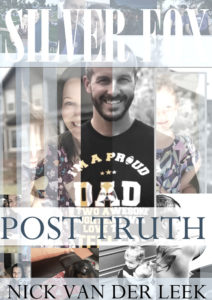
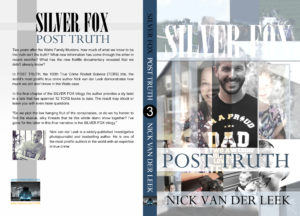
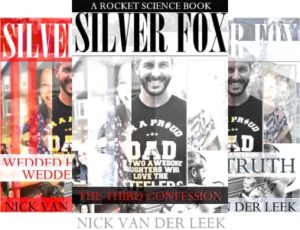


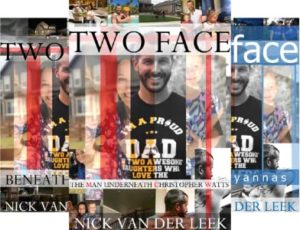

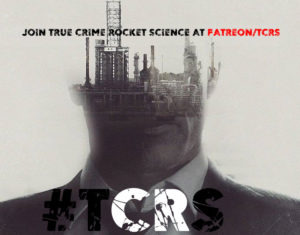

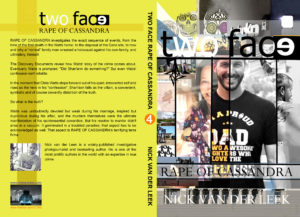
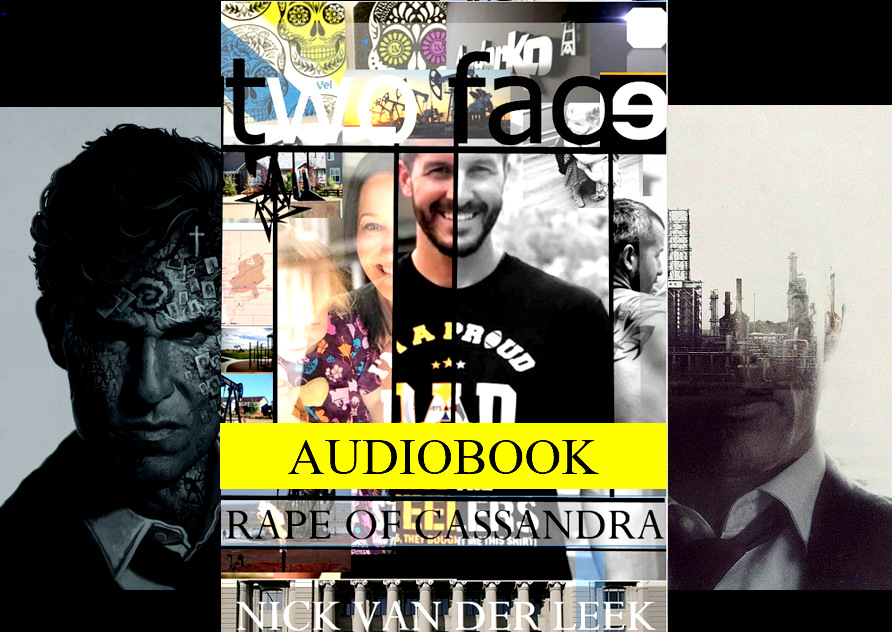
Recent Comments